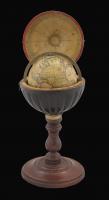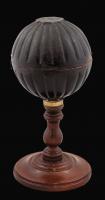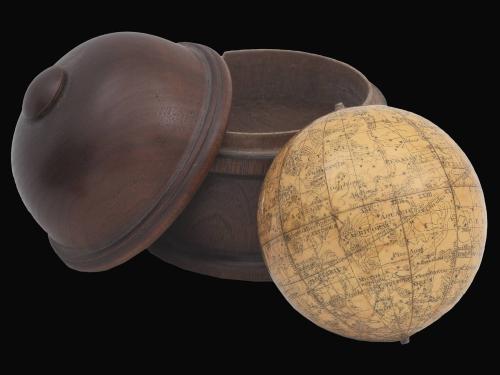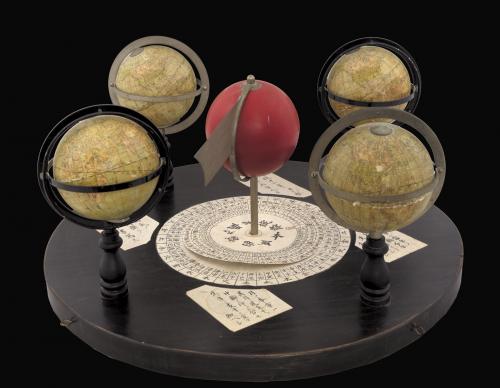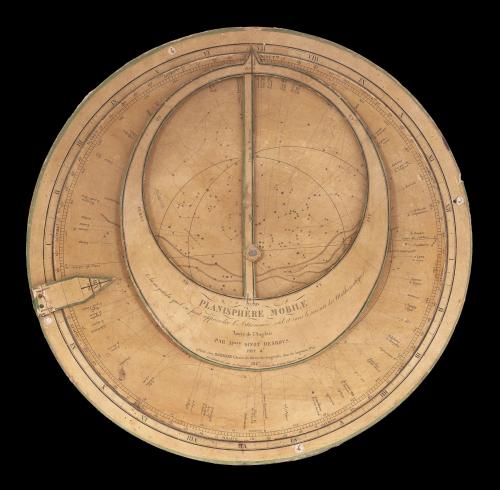
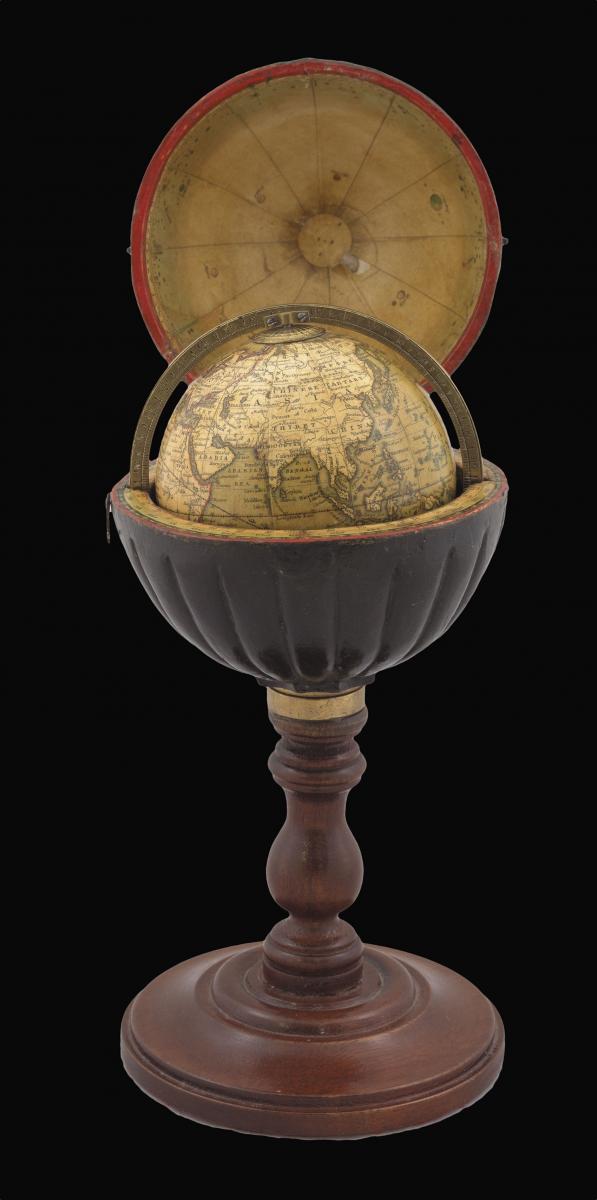
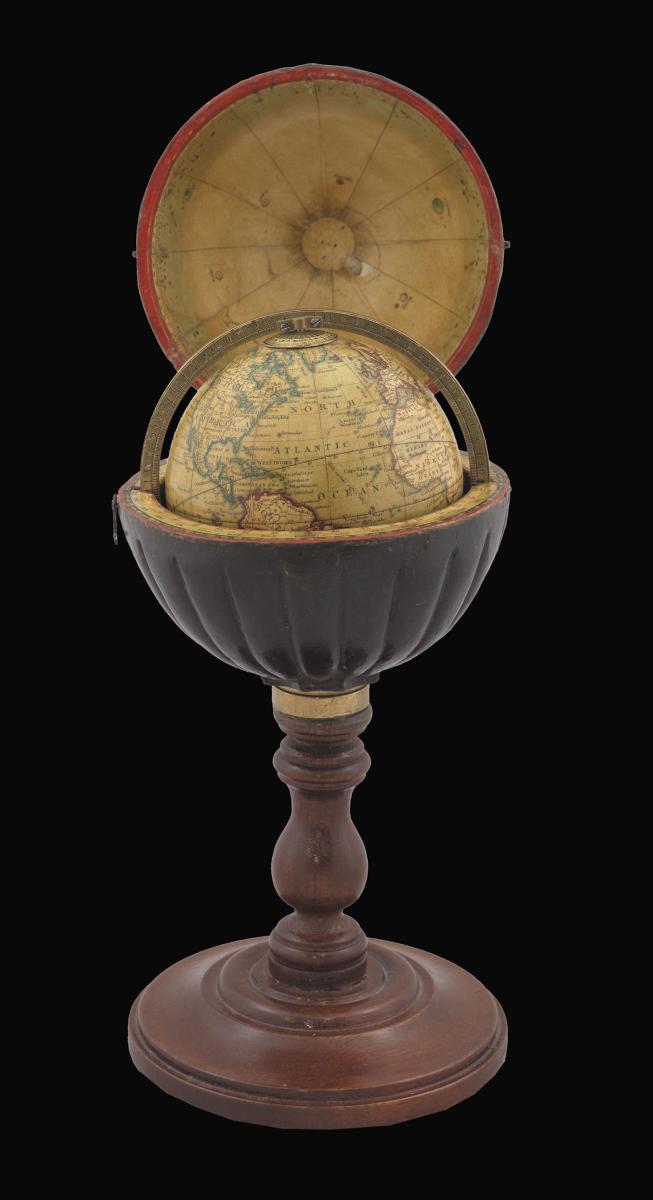
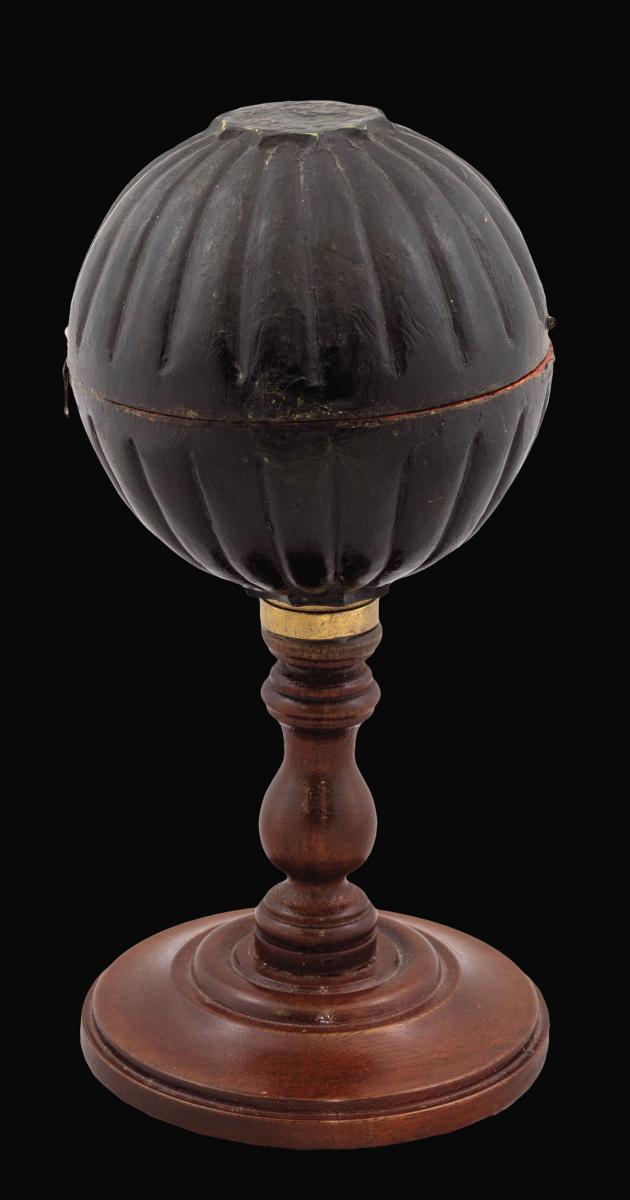
Price
£7000.00This object is eligible for a Certificate of BADA Provenance
The BADA Standard
- Since 1918, BADA has been the leading association for the antiques and fine art trade
- Members are elected for their knowledge, integrity and quality of stock
- Our clients are protected by BADA’s code of conduct
- Our dealers’ membership is reviewed and renewed annually
- Bada.org is a non-profit site: clients deal directly with members and they pay no hidden fees
Title Newton's New & Improved Terrestrial Globe
Author NEWTON, [John], NEWTON, William and NEWTON, Edward
Publisher Newton & Son, 66 Chancery Lane
Publication place London
Publication date c 1833
Globe, 12 hand-coloured engraved paper gores, over a papier mâché and plaster sphere, varnished, with brass hour circle on north pole, brass meridian ring, housed within wooden clamshell case painted green, rims painted red, with hooks and eyes, upper hemisphere lined with 12 celestial half-gores, varnished. Slight loss to celestial gore, one hook missing, case fixed to later wooden table stand by brass screw-in base of lower hemisphere.
Notes
The present globe is an updated version of Newton's 1830 pocket globe.
Biography
During the first half of the nineteenth century the firm of Newton, together with Bardin and Cary, occupied a leading position in the manufacture of globes in London. The firm was established by John Newton in 1783 and operated originally from the Globe & Sun 128 Chancery Lane, moving to 97 Chancery Lane in 1803, before settling at 66 Chancery Lane in 1817.
John Newton (1759-1844) was trained by Thomas Bateman (fl1754-81), who had previously been apprenticed to Nathaniel Hill (fl1746-1768). Newton's first globe was a revised edition of Hill's 1754 pocket globe, which he published in 1783 in association with William Palmer. The partnership dissolved shortly after, and Newton continued to publish the pocket globe under his own name. John's second son William Newton (1786-1861) joined the firm between 1814-1816, which traded under the name J. & W. Newton. In the same year the firm produced a new series of globes, including a new pocket globe.
By the 1830s the firm was also active as a patent agent and was joined by Miles Berry, a civil engineer and patent agent, after which the firm was known as Newton, Berry & Son. In 1842, William's eldest son, William Edward Newton (1818-1879), joined the business, followed by his brother Alfred Vincent Newton (1821-1900). The firm became known as W. Newton & Son, or once again, on the death of William, as simply Newton & Son from 1861 until about 1883.
Perhaps the greatest triumph for the Newton family was the Great Exhibition of 1851, where, aside from the globes they exhibited from 150 to 635mm (1 to 25 inches) in diameter, they were awarded a prize medal for a manuscript terrestrial globe of six feet in diameter.
Geography
The cartography is the same as Newton's 1830 pocket globe (item 40), but updated with the tracks of Captain Biscoe. From 1830-1833, Captain John Biscoe undertook a voyage of exploration to the Antarctic, for which he was awarded the Gold Medal by the Royal Geographical Society upon his return.
Astronomy
The cartography lining the inside of the case is the same as Newton's pocket globe of 1817 entitled 'New & Improved Terrestrial Pocket Globe'.
Bibliography
Dekker GLB0015; van der Krogt New 1; Victoria & Albert Museum W.34:1-1974 (celestial); for reference see Worms & Baynton-Williams pp.488-489.
Dimensions
Diameter: 77mm (3 inches)Stock number
15650The BADA Standard
- Since 1918, BADA has been the leading association for the antiques and fine art trade
- Members are elected for their knowledge, integrity and quality of stock
- Our clients are protected by BADA’s code of conduct
- Our dealers’ membership is reviewed and renewed annually
- Bada.org is a non-profit site: clients deal directly with members and they pay no hidden fees



